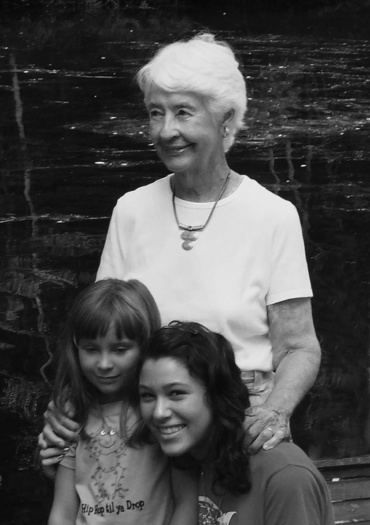After reading this chapter, the reader will be able to do the following: • Understand the changes in occupation across the life span • Understand the developmental tasks throughout the life span • Understand client factors across the life span • Describe the types of clients with whom occupational therapy (OT) practitioners work • Understand the unique services provided by occupational therapy at each developmental stage Infancy represents the period of birth through 1 year. (Figure 10-1). During this period, infants grow rapidly and achieve motor, social, and cognitive skills (Box 10-1). Gross and fine motor skills develop as infants begin to voluntarily reach, grasp objects, roll, sit, crawl, and eventually walk. Notably, infants grow in size, height, and weight. Frequently, pediatricians chart the infant’s growth pattern as a sign of early development. Pediatricians also test an infant’s reflexes. Primitive reflexes are present at birth or soon after, which is an indication of the infant’s neurological development.1 Reflexes are motor responses to sensory stimuli, such as moving one’s foot when the sole of the foot is stroked or quickly putting one’s hands in front to avoid falling. Infants possess a variety of reflexes. For example, the sucking reflex, which promotes nutrition, is present.1 Over the course of the first year, the primitive reflexes typically disappear. Thus, the practitioner evaluates for the presence or absence of reflexes as an indicator of development. An infant who continues to have reflexes past the “typical” age may have sustained neurological trauma.l Typically developing infants establish a sleep/wake cycle, and they experience periods of playfulness and express discomfort through crying.2 They can be consoled and stop crying once their needs are met. Infants who are not consolable may have sensory regulation disorder. These children may benefit from occupational therapy to help regulate their behaviors. Socially, infants interact by smiling and expressing emotions to family members. Infants play pat-a-cake, make eye contact, and smile. Between 8 and 10 months, infants develop stranger anxiety and may cry when approached or held by strangers. Social language begins in infancy with sounds, vocalizations such as cooing, listening, speaking words, and learning to respond to simple verbal directions.5 Infants begin to reciprocate by taking turns vocalizing or smiling, which is observed when they play “peek-a-boo.” OT practitioners work with infants who may have experienced birth trauma, disease, or genetic conditions that affect their development. Infants with cerebral palsy continue to be the largest referral to OT practitioners working in pediatrics. These children experience motor abnormalities caused by an insult to the brain before, during, or soon after birth. Infants with cerebral palsy do not reach milestones as expected for their age. Their motor deficits may result in slow, awkward, or asymmetrical movements. Although the progression of the disorder does not worsen, the child may appear to be getting worse as he or she ages because more is expected as children age. Other diagnoses requiring occupational therapy services include Down syndrome, spina bifida, Erb’s palsy, and a host of genetic disorders. Infants may experience developmental delays, which refers to a general slowing of skills. Children with syndromes may be treated by OT practitioners and frequently exhibit developmental delays, cardiac difficulties, and intellectual delays (previously referred to as mental retardation). OT practitioners also work with infants who have failure to thrive, head injury, HIV, or congenital anomalies, such as cleft palate. The OT practitioner works with the infant and the family to facilitate development or, as Llorens suggests, “close the gap.”5 OT practitioners frequently use the developmental frame of reference to evaluate infants.4,5 The developmental frame of reference postulates that practice in a skill set will enhance brain development and help the child progress through the stages. The OT practitioner using a developmental frame of reference begins by evaluating the current level of motor skill development. Once the practitioner has determined the skill level, the underlying client factors that may influence development are examined.5 Such things as muscle tone, coordination, symmetrical movements, and posture may influence development. Intervention is aimed at improving the underlying factors so the infant may perform the desired skill.3 Occupational therapy intervention with children is generally playful in nature, but it can include medically based intervention such as splinting, positioning, or cardiac rehabilitation. OT practitioners working with infants provide family-centered care, entailing that they collaborate closely with the family. Family-centered care involves working with family members on goals that are considered important to them. This collaboration works best when members of the team respect and listen to each other. This philosophy of care supports parents as being the “expert” on their child and urges practitioners to listen and respond to family requests. Parents may need education about caring for their infant and addressing the special needs of the infant. OT practi-tioners frequently teach parents how to hold, handle, and calm their infant. Education on feeding techniques and developmentally appropriate activities is common practice. Education may include providing parents with information on the infant’s diagnosis, prognosis, and intervention strategies. OT practitioners are skillful at providing this information in a language and format that is understandable to the parents and sensitive to their emotional needs. OT practitioners may also have to educate parents on the data supporting a given intervention. This may involve teaching parents what to look for in terms of outcomes or service from providers. Not only do OT practi-tioners consult and educate others, but they also provide parents with resources. For example, OT practitioners may provide specialized equipment to help infants with positioning, feeding, bathing, and mobility. Infants may require adapted toys that make it possible for them to grasp or manipulate. Practitioners may help support parents by recommending support groups, respite care, and assistance in making things easy at home. OT practitioners must consider the demands of parents when providing home programs. Box 10-2 provides a list of suggestions for home programs. Childhood includes early childhood (1-6 years) and later childhood or school-aged children (6-12 years). Childhood represents a time of growth and refining of skills.5 Children develop more coordination and strength and are therefore able to perform such skills as running, jumping, and more coordinated games. Play is the occupation of childhood; it is characterized as a spontaneous, enjoyable, rules-free, internally motivated activity in which there is no goal or purpose.2 For example, children may spontaneously engage in playing and singing joyfully in the rain or at the beach (Figure 10-2, A and B). Furthermore, children progress from playing independently (solitary play), to playing alongside peers (parallel play) in early childhood. After parallel play, children gain more abilities and engage in cooperative play (play toward an end goal), and in later childhood, games with rules become important. The stages of childhood development are continuous and influenced by culture, family, and environmental variables (Box 10-3).
Occupational Therapy Across the Life Span

Infancy
Developmental Tasks of Infancy

Diagnoses and Settings
Intervention
Childhood
Occupational Therapy Across the Life Span
Get Clinical Tree app for offline access



